Abstract
The Human Immunodeficiency Virus (HIV) that causes AIDS will continue to threaten public health for years to come. Despite some popular misperceptions, adolescents are at risk of infection. Twenty percent of persons reported with AIDS have been ages 20 through 29. Given the long incubation period between HIV infection and AIDS, some of these young adults probably were infected while they were teenagers. Young people must develop the skills they will need to avoid HIV infection and other related health problems. In 1987, the Centers for Disease Control (CDC) launched a national program to help schools and other agencies that serve youth across the nation provide effective health education to prevent the spread of HIV. CDC supports and works closely with national health and education organizations, State and local education agencies, colleges and universities, and local health departments to establish HIV prevention policies and programs, training and demonstration centers, information development and dissemination activities. The impact of these efforts are assessed through applied surveillance and evaluation research. Through this system, CDC is attempting to institutionalize the means for continuously providing educational programs that will be effective in preventing HIV infection and other important health problems.
Full text
PDF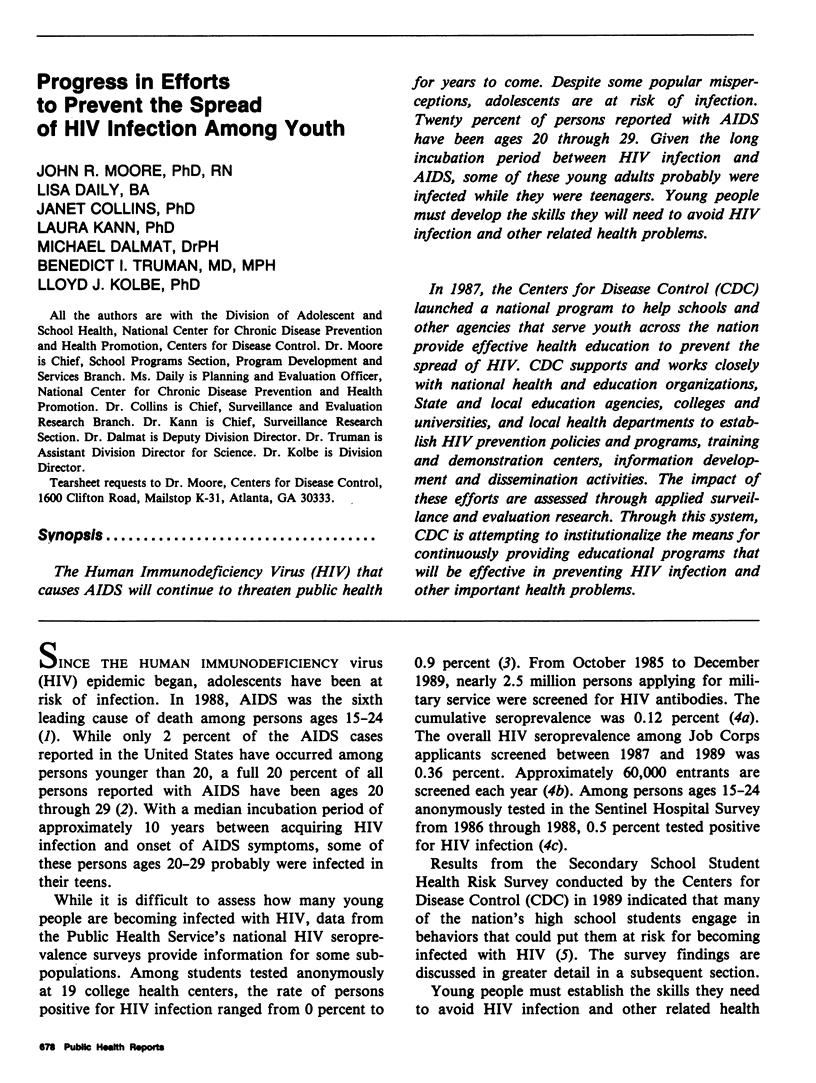
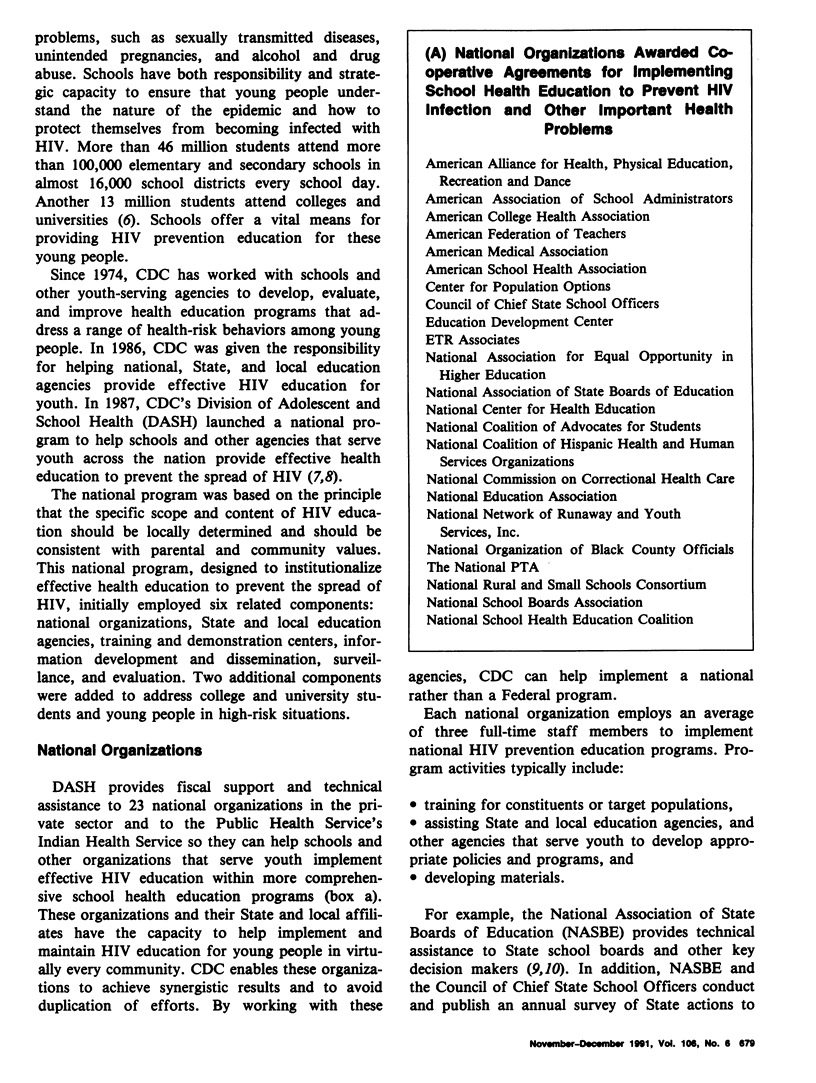
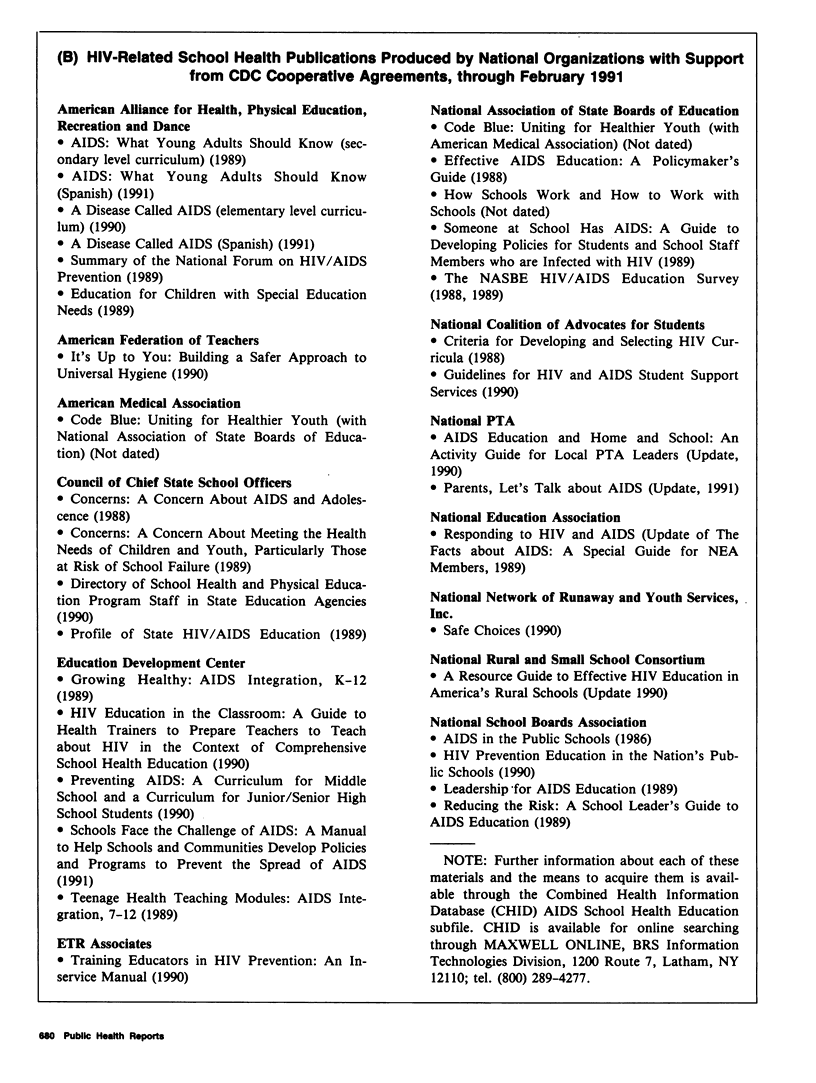
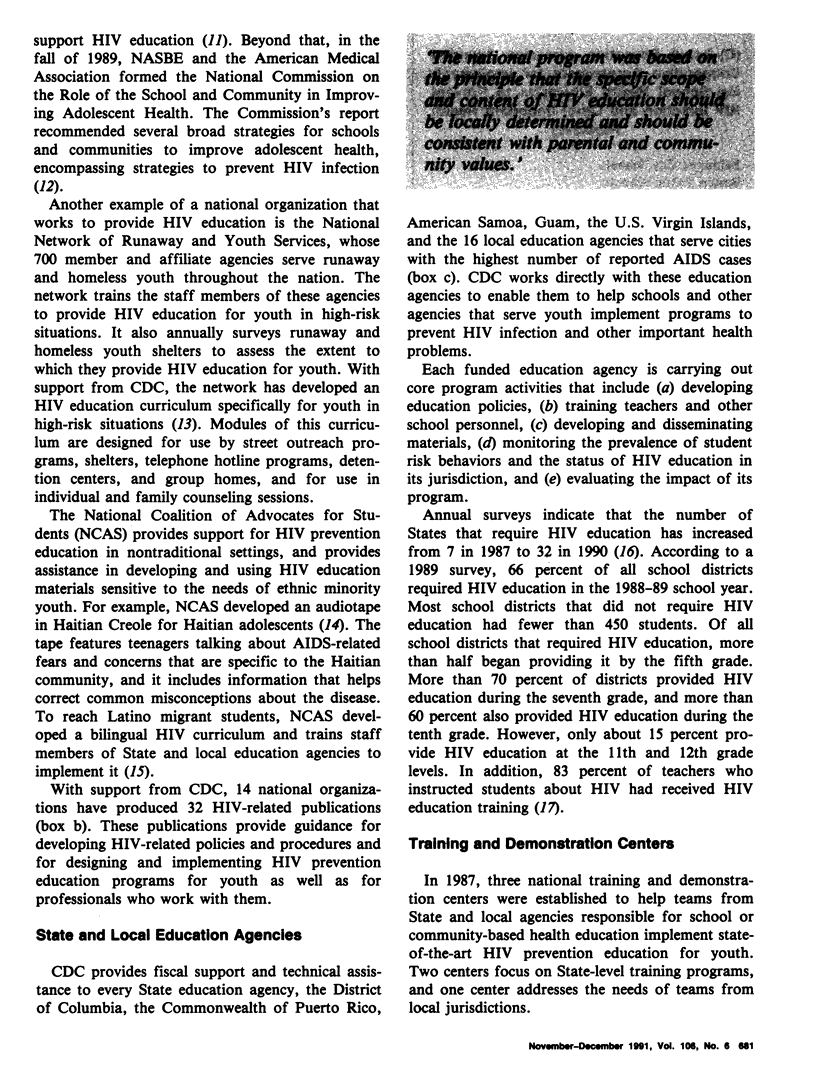
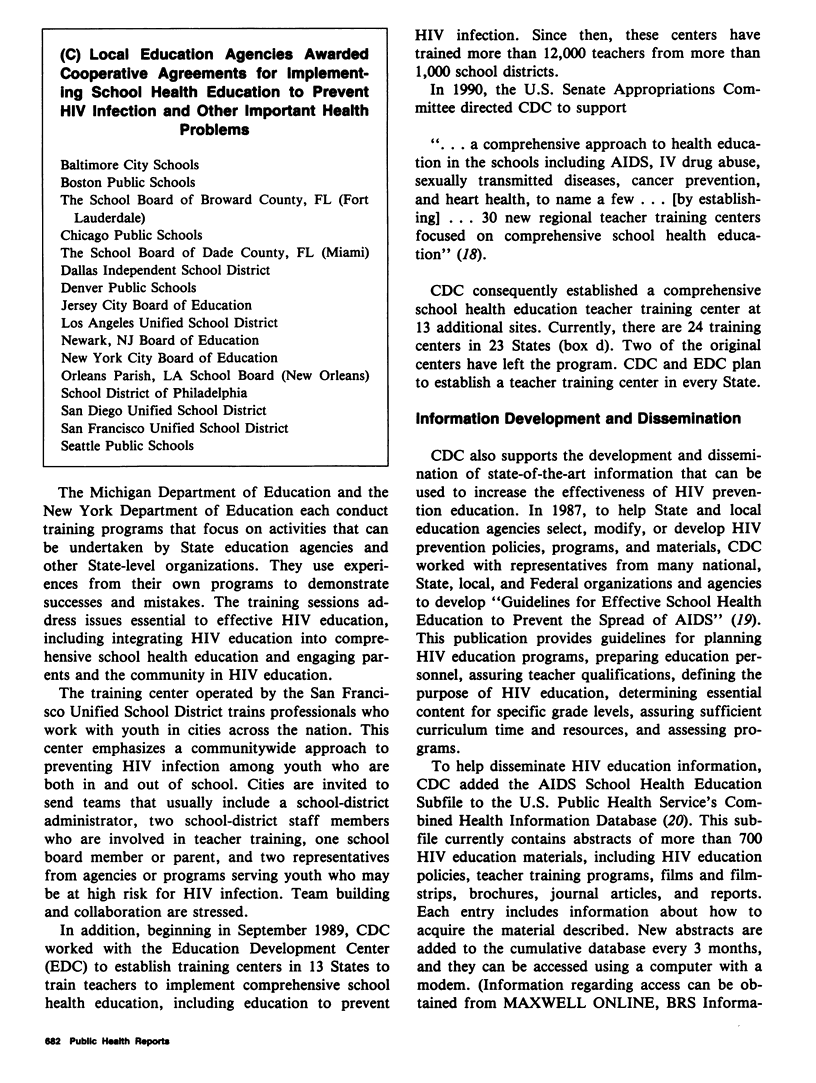
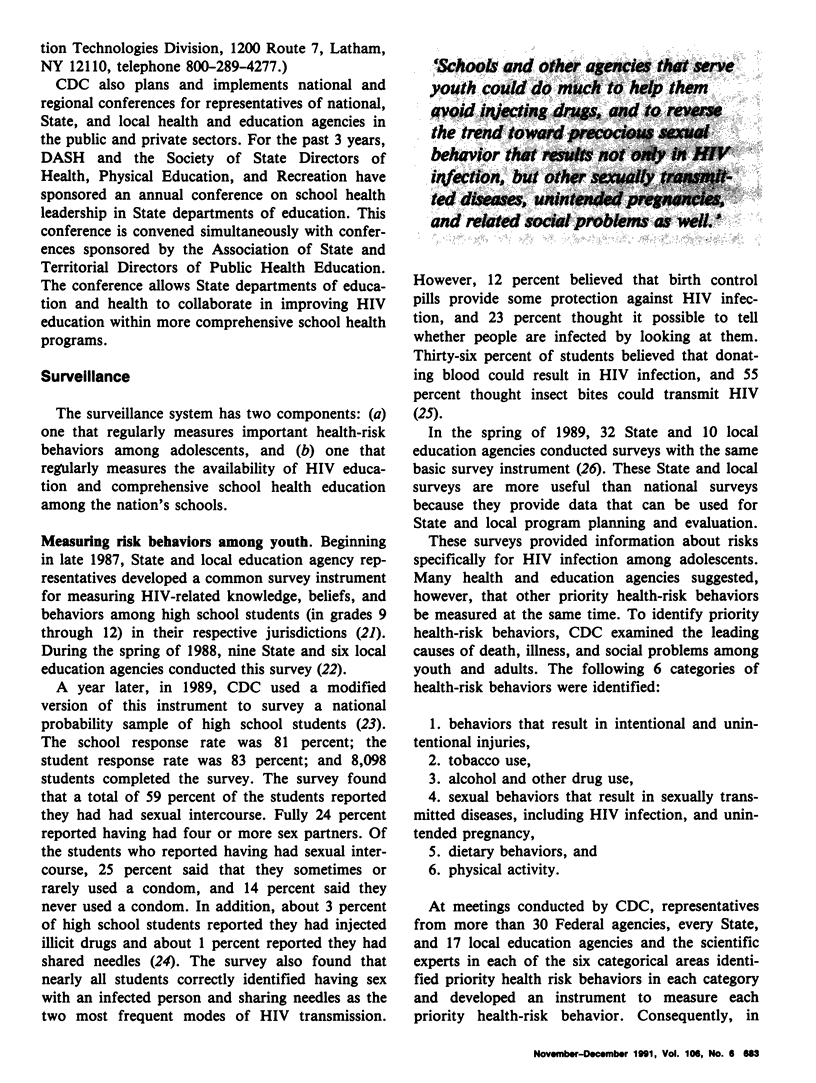
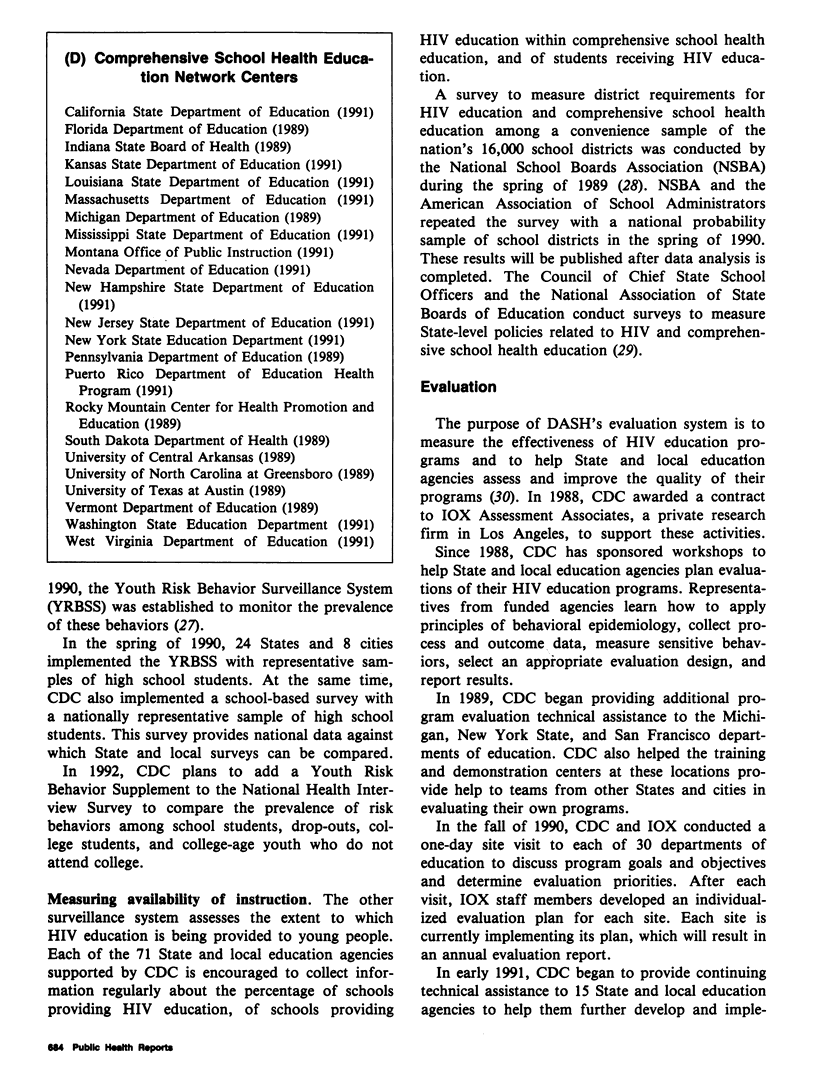
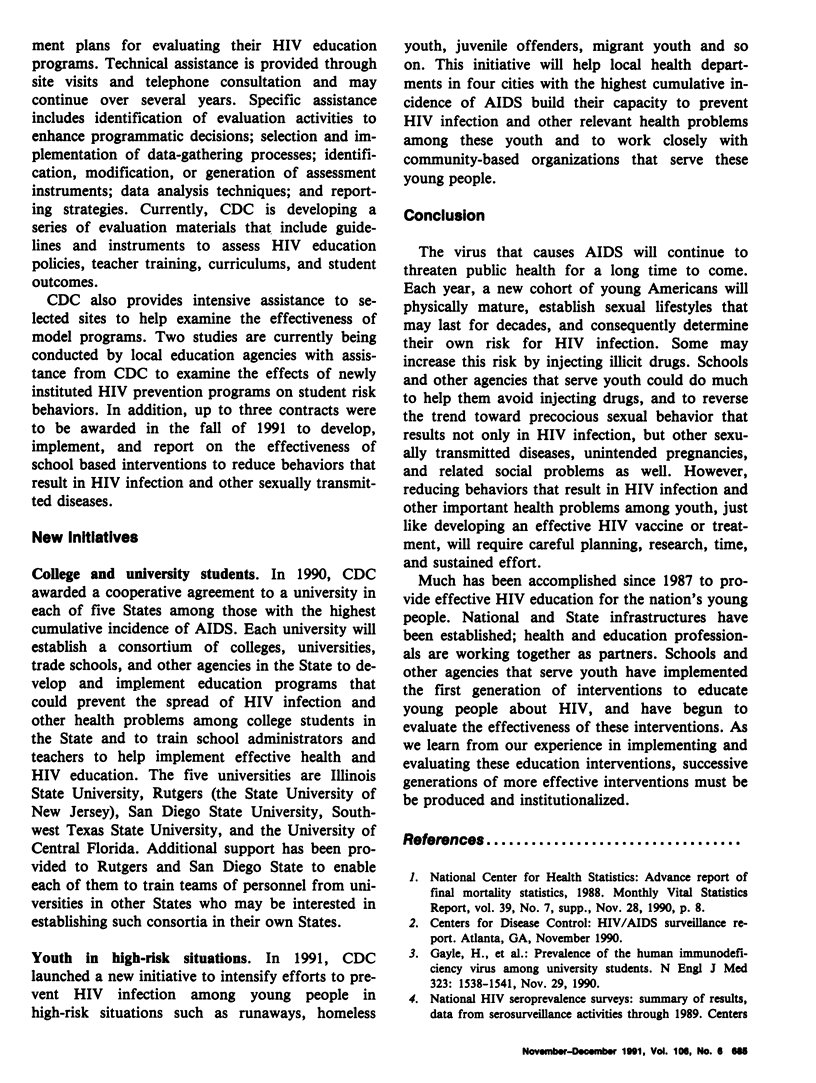
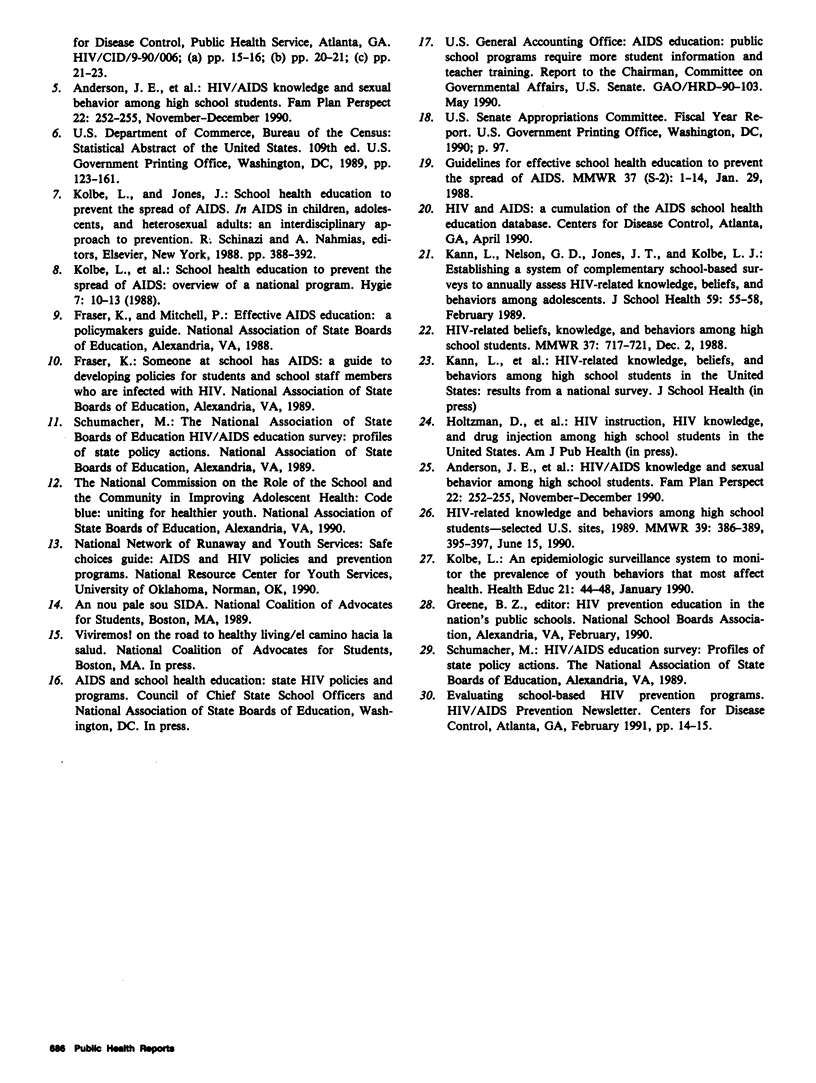
Selected References
These references are in PubMed. This may not be the complete list of references from this article.
- Anderson J. E., Kann L., Holtzman D., Arday S., Truman B., Kolbe L. HIV/AIDS knowledge and sexual behavior among high school students. Fam Plann Perspect. 1990 Nov-Dec;22(6):252–255. [PubMed] [Google Scholar]
- Anderson J. E., Kann L., Holtzman D., Arday S., Truman B., Kolbe L. HIV/AIDS knowledge and sexual behavior among high school students. Fam Plann Perspect. 1990 Nov-Dec;22(6):252–255. [PubMed] [Google Scholar]
- Gayle H. D., Keeling R. P., Garcia-Tunon M., Kilbourne B. W., Narkunas J. P., Ingram F. R., Rogers M. F., Curran J. W. Prevalence of the human immunodeficiency virus among university students. N Engl J Med. 1990 Nov 29;323(22):1538–1541. doi: 10.1056/NEJM199011293232206. [DOI] [PubMed] [Google Scholar]
- Kann L., Nelson G. D., Jones J. T., Kolbe L. J. Establishing a system of complementary school-based surveys to annually assess HIV-related knowledge, beliefs, and behaviors among adolescents. J Sch Health. 1989 Feb;59(2):55–58. doi: 10.1111/j.1746-1561.1989.tb05392.x. [DOI] [PubMed] [Google Scholar]


